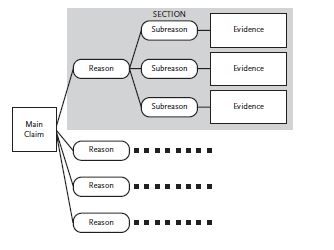Chapter 7 starts with a good few lines about conversation and research. “In a research report, you make a claim, back it with reasons based on evidence, acknowledge and respond to other views, and sometimes explain your principles of reasoning.” The readings go on to discuss the “thickening” (p.139) of an argument. The readings claim that the argument audience perceives the ethos of the reading, which the book claims is the “invisible sixth element in every argument you write” (p. 139). According to Chapter 9, the author writes that the support is based on reasons and evidence (p. 155). The section on reason (p. 156) shows an example for the logical relationships between the sections of an argument.

Chapter 3 goes on to report and emphasize that there are different levels of evidence (e.g. first hand, second hand, etc.). One of the major issues in data collection not discussed in the article is the trustworthiness of any data (and what is missed during any data collection). In chapter 10 the author discusses acknowledgements and responses. The authors encourage readers to improve their research by anticipating questions about their arguments: (1) the intrinsic soundness, and (2) consider alternatives. The author recommends a few support anticipations: different kinds of evidence, accurate, precise enough, current, representative, authoritative, and more evidence. The readings also encourage authors to decide what they need to acknowledge. Near the end of Chapter 10 (p.159) the author states, “Experienced researchers and teachers understand that truth is always complicated, usually ambiguous, always contestable.” This statement is epic and very rarely understood.